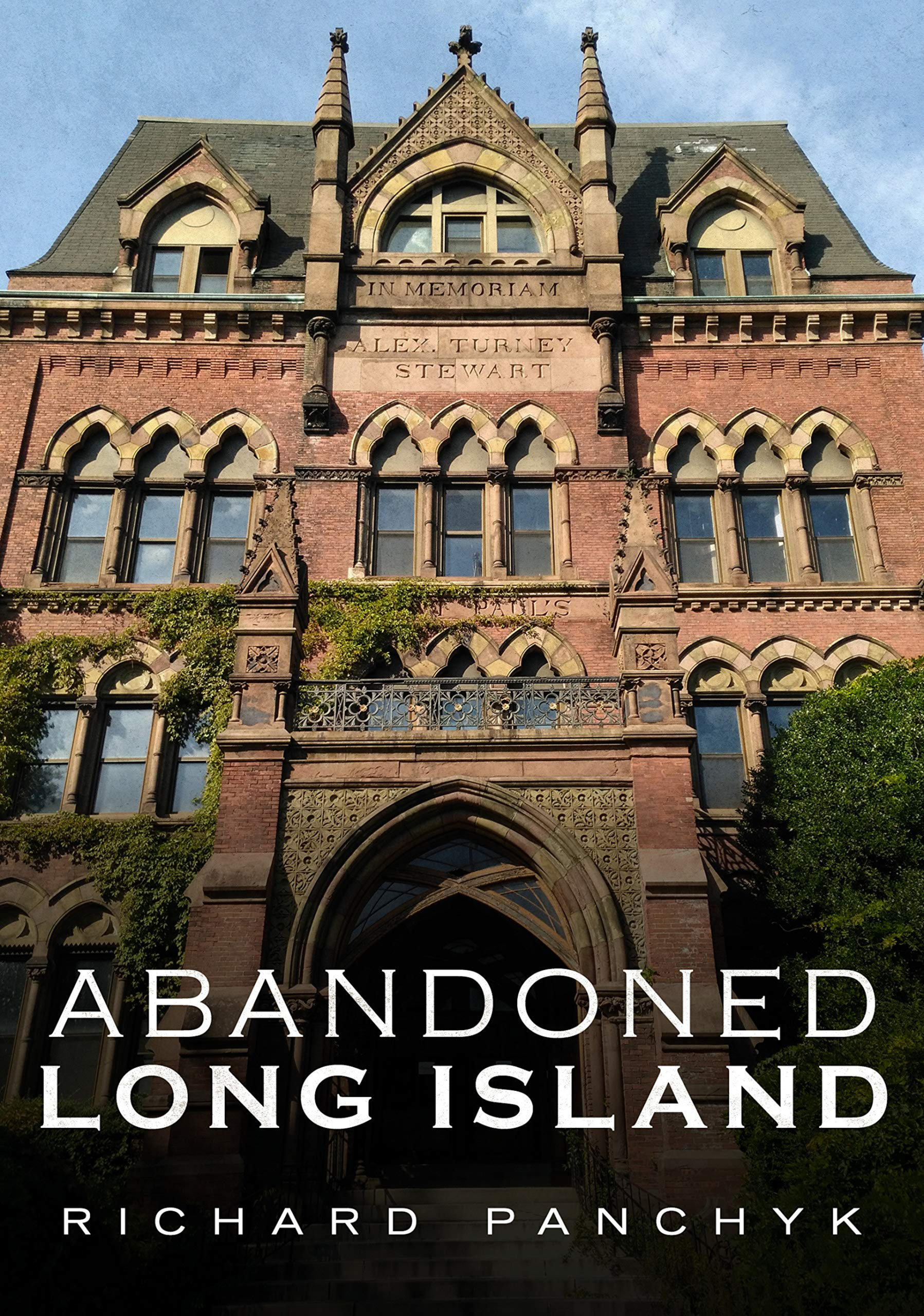Adventures In Abandonment


What an intriguing idea — to photograph (with brief text) decayed and decaying buildings in Nassau and Suffolk counties, which Richard Panchyk does with expertise, ease, and humor in an attractive booklet called “Abandoned Long Island.” He persuades the reader that he’s found a new and important way of presenting local history, using neglected places as markers of the culture of their time. It’s a theme worth considering, as communities grapple with change and the cost of restoring and repurposing old buildings — institutions and private estates — or letting them go.
Panchyk, who loves to go on abandoned-property jaunts, notes that they can prove not only adventurous but dangerous (the safest way to travel, he waggishly suggests, is to read his book), but the visits are worth it because of what they turn up — an old yellow Ajax container, a sink in the woods — “Because, why not!” Also, the people who come to hang out amid the graffiti-covered ruins and strangling vegetation, for whatever reasons.
At times, Panchyk concedes, it’s hard for him to separate vandalism and art. “People like to leave their mark when they trek through debris,” he notes, and some of it is attractive. His own marks, however, are the photos he presents here, sometimes of abandoned property found not off the beaten path but in plain sight, such as the 18th-Century Grist Mill in downtown Roslyn, active until 1916, and one of the few remaining examples of Dutch commercial architecture left in the country. Closed in 1975, and owned by Nassau County, the decaying structure awaits its fate, after 40 years of the village’s having collected money for its restoration.
Other sites have fared better. Welwyn, a renovated Harold I. Pratt-designed estate, sitting on a 204-acre preserve overlooking Long Island Sound, has become the Holocaust Memorial and Tolerance Center of Long Island, though ruins on the property at large remain. And Chelsea Mansion, designed by William Delano (cousin of FDR), is open for events, though the “fascinating” greenhouse complex lies in ruins.
Surprisingly, Panchyk takes a relaxed and often ironic view about many of the vandalized areas he visits, even seeing in some wasted areas aesthetic value and “cool, creepy, tripping fun.” He delights in tracking segments of the old LIRR, exploring Mitchel Field, and finding vestiges of the old Long Island Motor (Vanderbilt) Parkway. Motor Parkway was “the world’s first limited access concrete highway,” dating to a time when few people had cars and the rich wanted to keep it that way, instituting a $2 toll for road use. A remaining toll booth, moved some years ago, houses the Garden City Chamber of Commerce.
Panchyk’s 11 selections reflect his interest in diversity and the “eerie commingling of remnants of the past with the present and future”: Victorian buildings, mid-20th Century structures, and “historic moments frozen in time,” such as the cover image of the seductively grim Gothic façade of St. Paul’s School in Garden City. Built in 1879, and shuttered in 1991, this once 500-room Episcopal college prep school for boys can boast having housed two of Donald Trump’s brothers (father Fred Trump was a big donor).
Some institutional structures may be familiar to Long Island residents and tourists, such as the 13-story “creepy and mysterious” Kings Park psychiatric facility, the largest abandoned place on Long Island, that once housed more than 9000 (it closed in 1996). Featured here is Building 93, its remains exemplifying 1930 neoclassicist style. Fairchild Republic in Bethpage, another landmark, recalls the days Republic Aviation began in 1931 as the Seversky Aircraft Factory, which in its heyday manufactured more than 9000 P-47 Thunderbolt fighter planes for World War II.
Some abandonments are relatively recent. It wasn’t that long ago that Amagansett’s own Lauren Bacall (d. 2014) was doing ads for Fortunoff’s, arguably the most prominent of the 65 stores at the Westbury Mall. Opened in 1997, it closed in 2009, the victim of changing patterns in food courts and shopping. It’s odd to see the images of the abandoned mall, squeaky clean and empty. Sold in 2017 to be reopened as home improvement showrooms, the project has so far not been acted on, a not-unusual fate for many abandoned structures.
Richard Panchyk has 36 books to his credit on a diverse range of topics, including children and adult nonfiction, and he’s only 49. He will be speaking at Burton’s Books in Greenport on Saturday, August 31. And stay tuned, he says, for books on the way, including “Abandoned Queens” and “Midtown Trash.”



